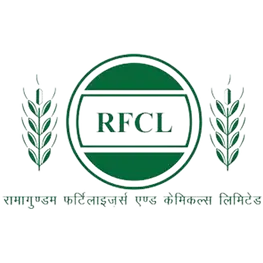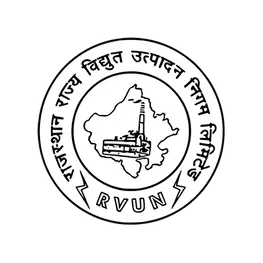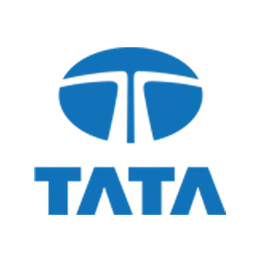Retrofit Emission Control Device for DG Set
Retrofit Emission Control Device for DG Set
A wide range of retrofit emission control devices (RECD) for diesel generator sets, ranging from 125KVA to 2000KVA. efficient for removing particulate matter, carbon monoxide (CO), hydrocarbons (HC), sulfur dioxide (SO2), and nitrogen oxides (NOx) from DG emissions.
Retrofit Emission Control Device (RECD)
A retrofit emission control device is a mechanism installed at the exhaust port of a diesel generator to reduce harmful emissions. DG Set's Retrofit Emission Control System removes harmful components such as diesel particulate matter (DPM), carbon monoxide (CO), hydrocarbons (CH4), sulphur dioxide (SO2), and nitrogen oxides (NOx). The retrofitting process is the most effective way to remove harmful emissions from the exhaust gas of a diesel engine. The Vasthi Instruments Retrofit Emission Control Device for (RECD) for diesel generators removes over 90% of particulate matter and other contaminants from the diesel generator emissions. The Retrofitted Emission Control Device is the equipment mandated by the Central Pollution Control Board (CPCB) for all fuel-powered engines, vehicles, and generators.
Why do you need retrofitted emission control equipment for your DG set?
Diesel generators are a major part of almost every infrastructure. From typical apartment complexes to large-scale industrial corridors, DG sets are used everywhere for backup power generation. Without an efficient emission control system, DG sets are also major contributors to the emission of harmful gases such as PM, CO, CH4, and NOx.Reducing emissions from diesel generators is the most important factor for public health and environmental safety. Diesel particulate matter (DPM) is recognized worldwide as a significant cause of respiratory illnesses and lung cancer. Sulfur dioxide (SO₂) and nitrogen oxides (NOx) are heavily responsible for environmental damage like disrupting the growth of trees in forests, polluting lakes, and being significant causes of acid rain. Equipping retrofitting emission control equipment (RECD) for DG sets is an immediate and most efficient way to reduce the harmful emissions in the exhaust. According to CPCB norms, a retrofitted emission control device for the dg set should have a particulate matter(PM) reduction efficiency of 70%.
The retrofit emission control device (RECD) working principle
The emissions from a diesel generator pass through the densely arranged ceramic filters in the emission control system, where black smoke containing PM, Carbon monoxide (CO), Hydrocarbons (CH4), and other harmful pollutants are captured. The ceramic filter in the emission control device for the dg set is composed of many micro parallel pores separated by air-permeable pore walls. These micropores block PM2.5 to PM10 level particles in the black smoke from DG exhaust. The alkaline metals used in the emission control system can fully capture the oxygen atoms in the air for the oxidation reaction. The common regeneration time of most retrofit emission control devices generally takes about 20 minutes, but Vasthi engineers have developed technologically advanced retrofit emission control devices that can completely regenerate in just ten minutes.
Particulate matter (PM)
Particulate matter can also be called particle pollution. The inhalable particles of dust, soot, smoke, and tiny liquid droplets of harmful chemicals in the air can be termed particulate matter (PM). Particulate matter is mainly formed as a result of the burning of fossil fuels in industries, vehicles, and generators. Most of these particles found in the air are extremely hazardous to health. Particle pollution is present in both the indoor and outdoor air we breathe at all times. Dust, grime, soot, and smoke are examples of particles that can be seen with the naked eye. Diesel particulate matter(DPM) are pollutants emitted from gases exhausted from diesel generators. Unburnt droplets of fuel, heavy hydrocarbons, black smoke hundreds of different chemical particles, and other PM2.5 and PM10 pollutants are emitted by diesel generator sets. These pollutant particles can stay in the air for an extended period of time. If not removed through an emission control system, these particulate matters can fatally deteriorate the health of people who inhale them.
Harmful effects particulate matter (PM)
Particulate matter is one of the major causes of the worst environmental damage caused to the planet. Pollutants emitted from industrial environments contain the most hazardous chemical traces and harmful smoke particles. Harmful inhalable smoke and dust are also generated by the mass burning of agricultural waste by farmers. Climate change and acid rain are both impacted by particulate matter (PM) pollution. Particulate pollution can exacerbate/aggravate acid rain while also altering weather patterns, causing droughts, accelerating global warming, and causing the ocean to become more acidic. Most of the particulate matter is created by complicated chemical reactions involving pollutants from power plants, industries, and automobiles, including the emission of sulfur dioxide (SO₂) and nitrogen dioxide (NO₂).
Particulate matter emissions from diesel engines are significantly higher (about 8 to 10 times) than most other conventional gas engines. Exposure to diesel emissions (DE) or diesel particulate matter (DPM) even for a short period of time can cause severe headaches, and eye, nose, and throat infections. Long-term exposure to DPM can increase the risk of cardiovascular, cardiopulmonary, and respiratory diseases and even lung cancer. Diesel generator exhausts have a higher concentration of PM10-level particulate matter emitted into the air. These higher pollutants are further carried across the globe by dominant winds due to atmospheric circulation, contaminating the air in non-industrial environments as well. Many health studies around the world show a remarkable association between exposure to particulate matter and health risks resulting in cardiac arrhythmias, heart attacks, asthma attacks, and bronchitis, including premature deaths.
Types of particulate matter (PM)
- Particulate matter can mainly be categorized into five different types.
- Mold spores, bacteria, dust, smoke, and airborne pollutants.
Particulate matter (PM) is divided into two different categories based on the diameter of their sizes:
Inhalable coarse particles Fine particlesInhalable Coarse Particles are pollutant particles with a diameter of 2.2 to 10 micrometers (PM 2.5 to 10). Fine Particles are pollutants with sizes less than 2.5 micrometers (PM 2.5) typically present in smoke and haze. Fine particles suspended in the air or gas produced by the combustion of fuels in power plants and other industries are called suspended particulate matter (SPM).
Effects of PM2.5 and PM10 on human health:
According to the World Health Organization (WHO), the Particulate Matter Level of PM2.5 concentration limits should be 5 g/m3 an average annually and 15 g/m3 on average for 24 hours.WHO also updated its Air Quality Guidelines (AQG) in 2021 with an ambitious aim for PM2.5 not to exceed 5µg/m3, and not exceed 10 µg/m3 of nitrogen dioxide (NO₂) annually. Most studies point to PM2.5 below 10 μg/m³ is considered healthy and there is little or no risk of exposure. If the level rises above 15 μg/m³ within 24 hours, the air is considered unhealthy and can cause problems for people with existing breathing disorders such as asthma. On the other hand, because of the sheer number of industries and their heavy dependence on diesel generators in this day and age, it is safe to assume that the harmful PM2.5 and PM10 pollutants in the emissions are at an alarmingly high rate worldwide. Domestically, more than 20 major cities in India have average PM2.5 concentrations of more than 74.4 micrograms per cubic meter of air (μg/m³) in 24 hours.
In 2022, according to the statistics, the top 5 polluted cities in the country are:
|
City |
PM levels in 24hrs |
|
Ghaziabad |
106.6 μg/m³ |
|
Bulandshahr |
98.4 μg/m³ |
|
Bisrakh jalalpur |
96 μg/m³ |
|
Bhiwadi |
95.5 μg/m³ |
|
Noida |
94.3 μg/m³ |
|
Delhi |
84.4 μg/m³ |
These levels of PM2.5 pollutants in the environment can cause severe health risks to people living in those cities. When inhaled, PM10 pollutants penetrate deep into the lungs when inhaled. PM 2.5 pollutants can even enter the bloodstream. Exposure to longer periods of particulate matter can have adverse effects on health, from coughing and wheezing to asthma attacks and bronchitis to high blood pressure, heart attacks, strokes, and premature death.
How do we reduce the Particulate matter concentration in the air?
Enabling powerplants, industrial combustion systems, and diesel generator sets (DG) with efficient emission control systems could make a significant change to the PM concentration in the air. The National Green Tribunal (NGT) has issued an order on the enforcement of emission control measures to be taken in an attempt to reduce the particulate matter (PM) concentration in emissions. In 2019, NGT has issued an order to reduce particulate matter emissions by using retrofitted emission control equipment for diesel generator (DG) sets.
Therefore, the Central Pollution Control Board (CPCB) is mandated as a "node" for preparing relevant compliance and testing procedures, under which "systems and procedures for testing of Retrofit emission control devices (RECD)" are approved. According to the Centre for Science and Environment (CSE) estimates, a typical 378 MW diesel generator (DG) consumes 1.4 lakh (140,000) tonnes of diesel annually. Without an emission control system enabled, this level of fuel consumption results in the emission of 65% of particulate matter(PM) and sulfur dioxide(SO₂) load in the environment. A retrofit emission control device (RECD) can reduce particulate matter concentrations in diesel engine generator exhaust by 70% to 90%. These devices are installed in the exhaust system to reduce emissions and do not impact the generator’s operation.
There are two types of retrofit emission control systems available for a DG set
• Diesel particulate filters (DPF)
• Diesel oxidation catalysts (DOCs).
DPF: A DPF is an emission control system installed in the exhaust of diesel generator sets and engines. A diesel particulate filter or DPF is specifically installed to capture and filter out 90% of diesel particulate matter from the exhaust.
DOC: Diesel oxidation catalyst or DOC is a catalytic converter mainly used to filter out harmful emissions like carbon monoxide(CO), hydrocarbons(CH4), and particulate matter (PM) preventing them from entering the atmosphere.
In addition to these, another emission control system called Selective Catalyst Reduction (SCR) is used in vehicles to control Nitrogen Oxides (NOx) emissions by heavy use of ammonia (NH3). A retrofitted emission control equipment for a diesel generator set is the most efficient way to remove PM concentration from the exhaust. Our engineers at Vasthi Instruments have designed and developed Retrofit emission control devices(RECD) for DG sets, in compliance with CPCB 2 norms that can achieve a maximum emission control rate of 95%.
Vasthi Instruments has high-efficiency Retrofit Emission Control Devices (RECD) fit for diesel generators (DG) of every power generation capacity ranging from 125KVA to 2000KVA. RECD for diesel generators (DG) with power capacities as low as 5KVA are provided based on user requirements.


.webp)

.webp)

.webp)
.webp)
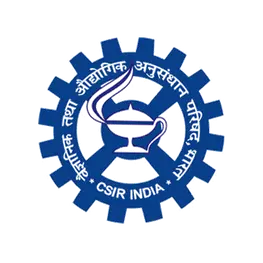
.webp)

.webp)
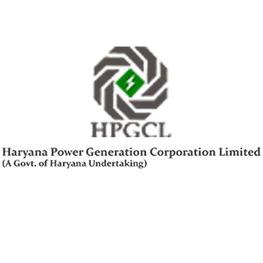
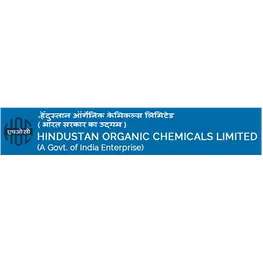


.webp)

.webp)





